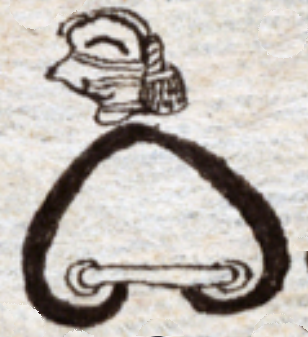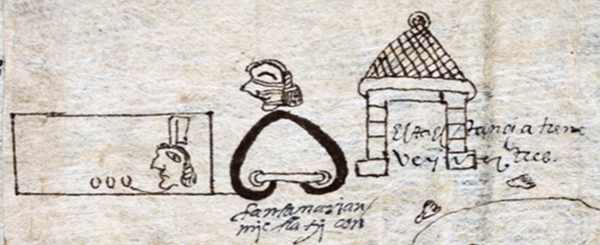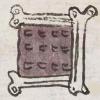Mictlantzinco (RGTyM)
This is a drawing of the compound glyph for the place name Mictlantzinco. It shows the head of a deceased person above a hill or mountain. The latter serves as a silent, but visual, locative. The head of the deceased has its visible eye closed, which is diagnostic for his being dead (miqui). His head is not just a skull, but still has some hair. The head is also wrapped with cord that recalls the wrapping of a shrouded corpse (micqui).
Stephanie Wood
1582
Jeff Haskett-Wood
muertos, la muerte, topónimos, pueblos, estancias, nombres de lugares, altepetl

mictlan, place of the dead, https://nahuatl.wired-humanities.org/content/mictlan
-tzinco (locative suffix used with little, lower, and spin-off communities), https://nahuatl.wired-humanities.org/content/tzinco
Lugar de los Muertos (un pueblo nuevo)
Stephanie Wood
The source of these hieroglyphs is a manuscript and map known collectively as the “Relación de Tistla y Muchitlan,” also known as the “Descripción de la Alcaldia Mayor de las Minas de Zumpango.” Apparently, these towns (today spelled Tixtla and Mochitlan) are in the modern-day state of Guerrero, but they fell under the religious jurisdiction of the Diocese of Tlaxcala. Thanks go to Octavio Márquez for his contribution of the glyph, gloss, and contextualizing images.
The original manuscript is hosted on line as part of the Benson Latin American Collection, The General Libraries, University of Texas at Austin, https://collections.lib.utexas.edu/catalog/utblac:fbc92b3e-bb28-4258-975.... It is open-access.




